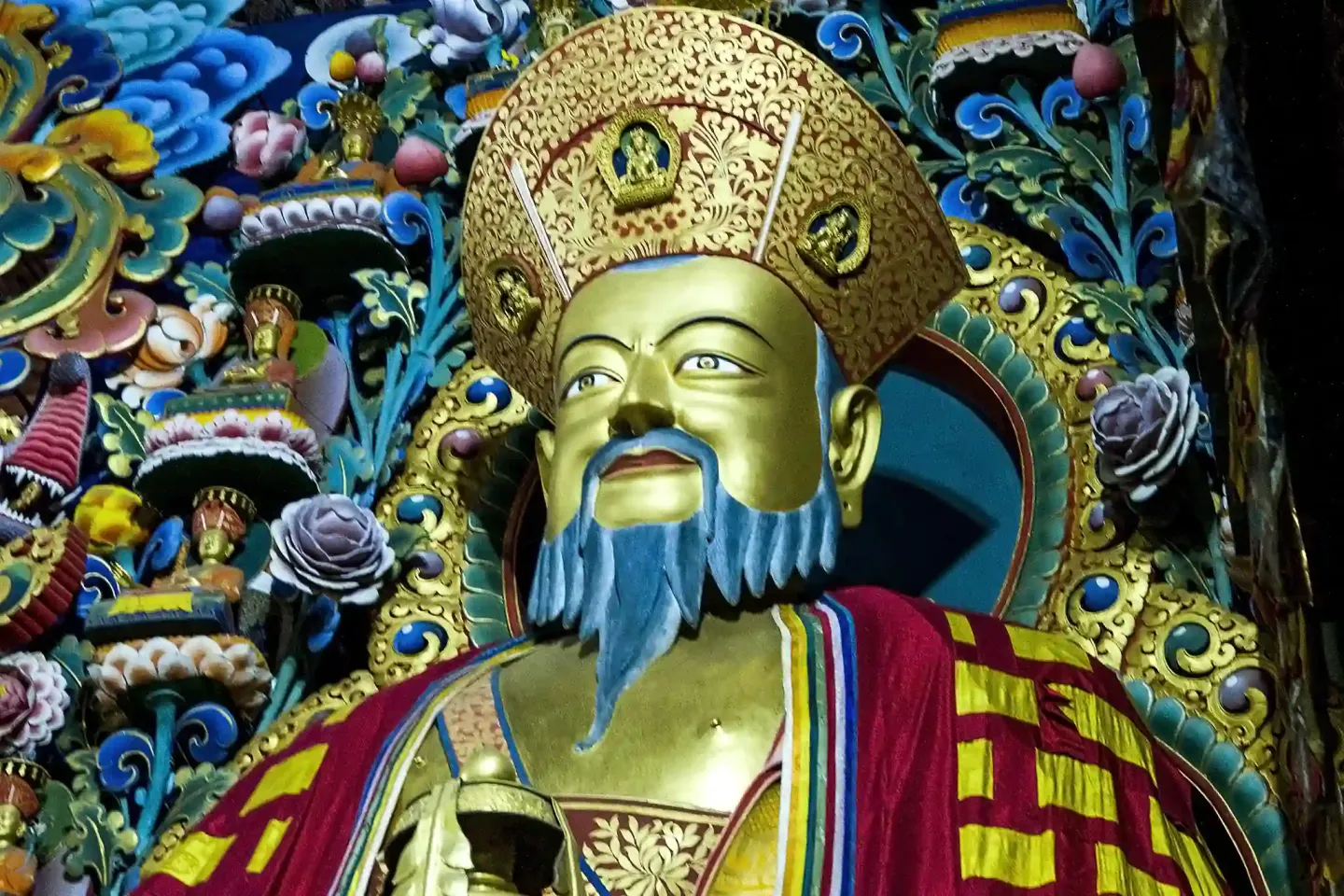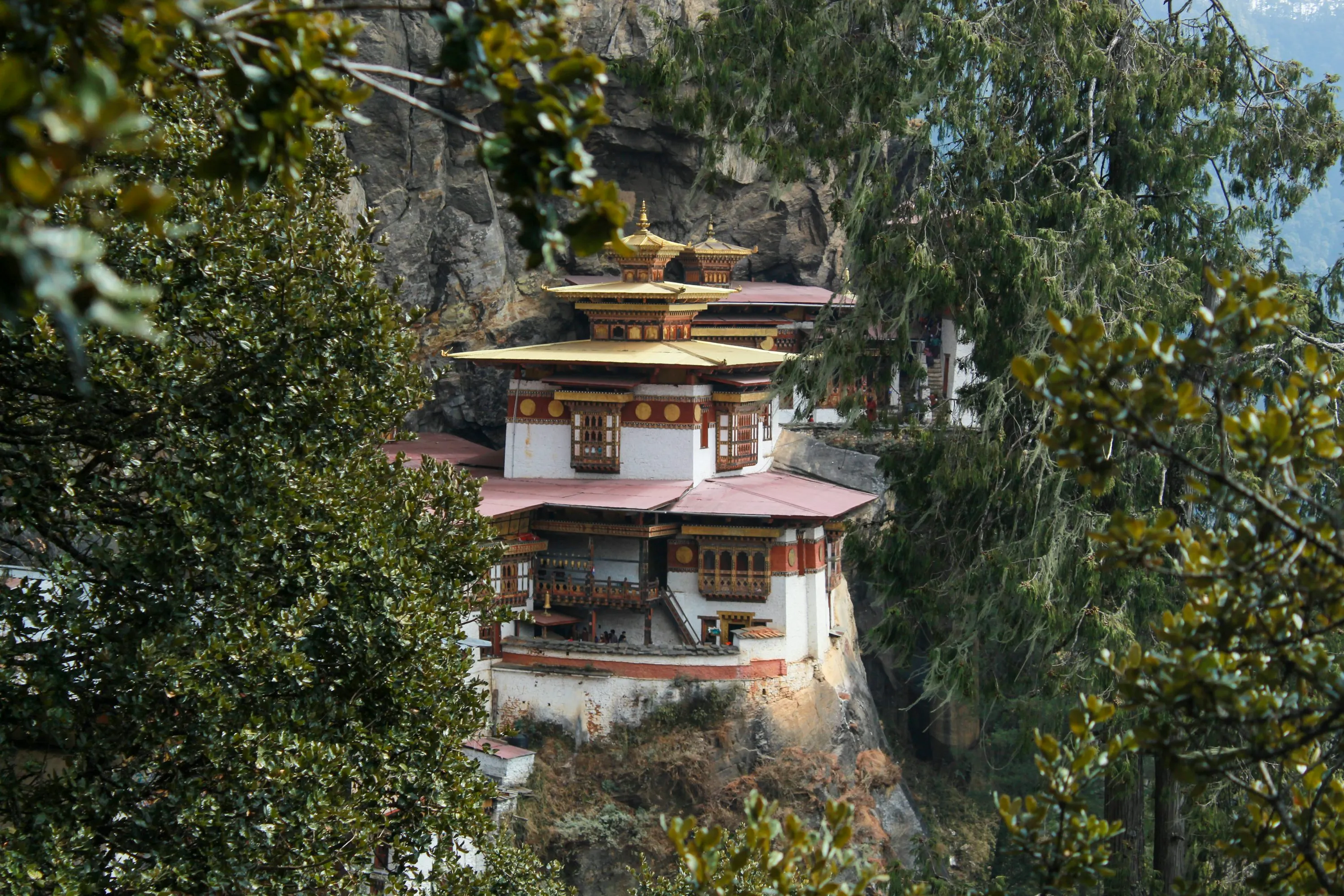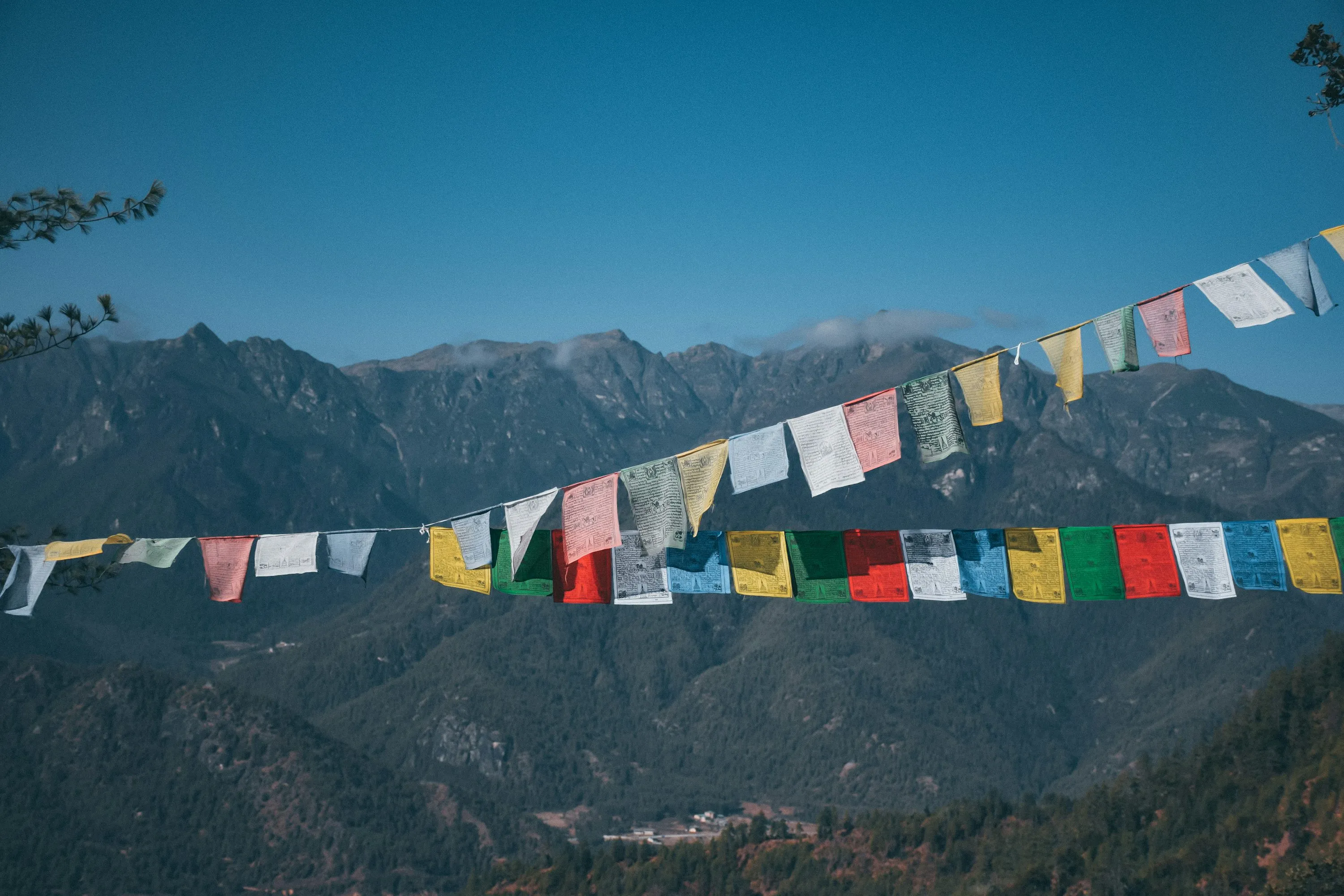Nestled in the heart of the Eastern Himalayas, Bhutan emerges as a hidden gem for travelers seeking an authentic escape from the ordinary, offering a blend of breathtaking natural landscapes, profound spiritual heritage, and a commitment to sustainable living that resonates deeply in today's fast-paced world. For Belizean visitors, accustomed to the vibrant Caribbean coastlines, lush rainforests, and diverse cultural tapestry of their homeland, Bhutan presents a strikingly different yet equally captivating experience—a landlocked kingdom where snow-capped peaks replace turquoise seas, and ancient monasteries stand in for Mayan ruins. While Belize boasts a population of around 400,000 spread across its tropical terrain with strong ties to Central America and the Caribbean Community, Bhutan mirrors this intimacy with roughly 770,000 inhabitants, emphasizing a philosophy of Gross National Happiness that prioritizes well-being over economic growth, much like Belize's focus on eco-tourism and cultural preservation. Diplomatic relations between the two nations, though neutral and not extensively developed, are grounded in mutual respect as fellow members of the United Nations, with no historical conflicts and shared interests in environmental conservation. This guide, crafted from the perspective of an experienced Bhutanese travel consultant, aims to equip Belizean travelers with the knowledge to navigate Bhutan's unique charms, ensuring a journey that is not only memorable but also respectful of its traditions and ecosystems.
Visa and Entry Requirements
Bhutan's tourism policy is meticulously controlled to preserve its cultural integrity and natural environment, mandating that all foreign visitors, including those from Belize, must book their trips through licensed Bhutanese tour operators, which ensures a structured and sustainable travel experience. For Belizean tourists, the visa process begins with selecting a reputable tour operator who will handle the application on your behalf, submitting necessary documents such as a scanned copy of your passport (valid for at least six months beyond your planned departure from Bhutan), a recent passport-sized photo, and details of your itinerary. Once the tour is confirmed and full payment is made—including the tour cost and the Sustainable Development Fee (SDF)—the operator forwards these to the Tourism Council of Bhutan for visa approval, which typically takes about 3-5 working days. Upon approval, an e-visa is issued and emailed to you, which must be presented along with your passport at the entry point, usually Paro International Airport. The SDF, a key component of Bhutan's high-value, low-impact tourism model, currently stands at USD 100 per person per night for adults (with reductions for children aged 6-11 at USD 50, and exemptions for those under 6), and it is directly tied to visa issuance as it funds conservation, education, and healthcare initiatives. This fee significantly influences overall trip pricing, often making Bhutan a premium destination, but it guarantees that your visit contributes positively to the kingdom's development without overwhelming its resources.
Travel Routes from Belize to Bhutan
Traveling from Belize to Bhutan involves a multi-leg journey that spans continents, reflecting the geographical distance between the Caribbean and the Himalayas, and requires careful planning to account for transit times and potential delays. From major Belizean hubs like Philip S.W. Goldson International Airport in Belize City (BZE), there are no direct flights to Bhutan, so routes typically involve flying to a major Asian gateway such as Bangkok in Thailand, Kathmandu in Nepal, or Delhi in India, before connecting to Paro International Airport (PBH), Bhutan's sole international gateway. Common itineraries might include departing Belize City on airlines like United Airlines or American Airlines to a U.S. hub like Houston or Miami, then onward to Bangkok via carriers such as EVA Air or Thai Airways, and finally boarding Druk Air (Bhutan's national carrier) or Bhutan Airlines for the short flight to Paro. These Bhutanese airlines operate limited schedules—often just a few flights per week from each transit point—due to Paro's challenging high-altitude location amid steep mountains, where landings are only possible during daylight and in clear weather, leading to frequent delays or cancellations if conditions like fog or strong winds arise. Belizean travelers should book flights well in advance, ideally through their tour operator who can coordinate seamless connections, and build in buffer days for any disruptions, expecting total travel times of 30-40 hours including layovers, with realistic costs starting around USD 1,500-2,500 round-trip depending on the season and class of service.
Best Time to Visit and Seasonality
Bhutan's climate is as diverse as its topography, divided into four distinct seasons that profoundly influence travel experiences, from the blooming valleys of spring to the crisp skies of autumn, each offering unique opportunities for cultural immersion and outdoor activities. Spring, spanning March to May, brings mild temperatures averaging 15-25°C in lower altitudes, with rhododendrons and jacarandas carpeting the landscapes in vibrant colors, making it ideal for trekking and witnessing festivals like the Paro Tshechu in April, though occasional showers can occur. Summer, from June to August, ushers in the monsoon with heavy rains, particularly in the southern regions, leading to lush greenery but also landslides and foggy conditions that might disrupt road travel and flights, yet it's a quieter time for birdwatching and experiencing local life without crowds. Autumn, September to November, is widely regarded as the prime season with clear blue skies, comfortable 10-20°C weather, and harvest festivals such as the Thimphu Tshechu, providing perfect conditions for hiking to sites like Tiger's Nest Monastery. Winter, December to February, sees colder temperatures dropping to 0-10°C or below in higher areas, with possible snowfall enhancing the scenic beauty for those interested in quieter cultural tours, though some passes may close. For Belizean tourists, accustomed to tropical warmth, the best months are March to May or September to November, balancing favorable weather for exploration, festival highlights, and fewer visitors compared to peak times, allowing for a more intimate connection with Bhutan's serene pace.
Money, Costs, and Payment Methods
The Bhutanese Ngultrum (BTN) serves as the official currency, pegged at par with the Indian Rupee, and while exchange rates fluctuate slightly against the Belizean Dollar (BZD), travelers can expect straightforward conversions at banks or authorized counters upon arrival. ATMs are increasingly available in major towns like Thimphu and Paro, accepting international Visa and Mastercard cards, though reliability can vary in remote areas, so Belizean visitors are advised to withdraw sufficient cash in urban centers to cover rural excursions where digital payments are limited. Credit cards are accepted at higher-end hotels and some shops, but many local vendors prefer cash, making it prudent to carry USD for easy exchange at airports or banks, as BTN is not freely convertible outside Bhutan. Tour packages, mandatory for all visitors, typically encompass accommodations, meals, transportation, guides, and entry fees, with daily costs ranging from USD 250-300 per person including the SDF, but extras like alcoholic beverages, souvenirs, tips (around USD 10-15 per day for guides and drivers), and personal expenses such as laundry or optional activities add up separately. This all-inclusive structure simplifies budgeting for Belizeans, ensuring transparency while supporting local economies, though carrying a mix of cash in small denominations facilitates smoother transactions in markets or for gratuities.
Health, Safety, and Travel Insurance
Health considerations in Bhutan revolve around its high-altitude terrain, where elevations often exceed 2,000 meters, posing risks of acute mountain sickness with symptoms like headaches, nausea, and fatigue that can affect even fit travelers from sea-level Belize. Medical facilities are basic outside major cities, with well-equipped hospitals in Thimphu but limited in rural areas, so recommended vaccinations include Hepatitis A, Typhoid, Tetanus, and possibly Rabies given the presence of stray dogs, alongside routine shots like MMR. Bhutan maintains exceptional safety standards with low crime rates, making it one of the world's safest destinations, though minor risks such as uneven paths during hikes or encounters with wildlife necessitate caution. Comprehensive travel insurance is indispensable, covering medical emergencies, evacuation by helicopter (essential for remote areas), trip cancellations, and lost baggage, as standard policies from Belize may not suffice for Bhutan's unique challenges. This preparation allows Belizean explorers to focus on the kingdom's tranquility, knowing that while petty theft is rare, vigilance with valuables and adherence to guided tours enhances overall security.
Cultural Etiquette and Social Expectations
Bhutanese society is deeply rooted in Buddhist principles, emphasizing respect, humility, and harmony, which shape interactions and require visitors to adapt thoughtfully to avoid unintentional offenses. In temples and monasteries, remove hats and shoes before entering, dress modestly with covered shoulders and knees, and circumambulate sacred sites clockwise, refraining from pointing at deities or using feet to gesture, as feet are considered lowly. Socially, greetings involve a slight bow with palms together saying "Kuzuzangpo la," and patience is valued in conversations, where direct confrontation is avoided in favor of polite discourse. For Belizeans, whose culture celebrates expressive Creole influences and communal warmth, slight adjustments might include toning down boisterous behaviors in public spaces to align with Bhutan's understated demeanor, while embracing the kingdom's emphasis on modesty—avoiding revealing clothing even in casual settings—and showing deference to elders or monks. These customs foster meaningful connections, as Bhutanese hospitality often extends to sharing tea or meals, encouraging visitors to reciprocate with genuine interest and gratitude, enriching the travel experience through mutual respect.
Connectivity, SIM Cards, Internet Access
Connectivity in Bhutan has improved significantly, with Wi-Fi available in most hotels and cafes in urban areas like Thimphu and Paro, though speeds can be inconsistent in remote valleys, making it suitable for basic browsing but not always reliable for streaming. For mobile access, tourists can purchase local SIM cards from providers like B-Mobile (Bhutan Telecom) or TashiCell at the airport or authorized outlets upon arrival, requiring a passport copy and photo, with tourist packages offering data bundles starting at around BTN 200 for 2-6 GB valid for a week. These SIMs provide good coverage in populated regions, enabling calls, texts, and internet on unlocked phones, though signal drops in mountainous terrains. Belizean apps and services generally work without restrictions, but a VPN can be useful for secure access or bypassing any occasional geo-blocks. This setup ensures Belizean travelers stay connected for navigation or sharing experiences, while embracing periods of disconnection as part of Bhutan's serene appeal.
Language and Communication
Dzongkha is Bhutan's national language, but English is the medium of instruction in schools and widely spoken in tourism sectors, making communication straightforward for most interactions with guides, hotel staff, and urban locals. Tour guides, certified by the Tourism Council, are fluent in English, and while Belizean Creole-speaking guides are not commonly available due to the niche demand, operators can arrange multilingual support if requested in advance. In rural areas, language barriers may arise with older residents, but gestures, simple English, or translation apps suffice, supplemented by the universal warmth of Bhutanese smiles. For travelers with limited English, visual aids or pre-arranged interpreters enhance understanding, ensuring that cultural exchanges remain enriching despite linguistic differences.
Packing and Preparation Advice
Packing for Bhutan demands versatility to handle its variable Himalayan climate, where days can shift from sunny warmth to chilly evenings, especially at higher altitudes. Essential clothing includes layered outfits like moisture-wicking base layers, fleece jackets, waterproof windbreakers, and sturdy hiking boots for treks, alongside modest attire such as long pants and scarves for temple visits, with quick-dry fabrics ideal for monsoons. Personal items should encompass sunscreen, insect repellent, a reusable water bottle for hydration, over-the-counter medications for altitude or stomach issues, and prescription drugs with copies of scripts. Power adapters for Type D or G plugs (230V) are crucial, as are portable chargers for remote areas with sporadic electricity. Belizeans, familiar with tropical packing, should add warm accessories like gloves and hats for winters, plus eco-friendly toiletries to align with Bhutan's conservation ethos, ensuring comfort amid the kingdom's rugged beauty.
Bhutan’s Unique Tourism Philosophy
At the core of Bhutan's approach to tourism lies the philosophy of Gross National Happiness (GNH), a visionary framework introduced by the Fourth King to measure progress through holistic well-being rather than mere economic metrics, integrating psychological health, environmental sustainability, cultural preservation, and good governance. This ethos drives the kingdom's cautious tourism policies, favoring high-value, low-volume visitors to prevent the overcrowding and degradation seen elsewhere, ensuring that each traveler's presence supports rather than strains local communities. For Belizean explorers, this means understanding why Bhutan limits modernization—eschewing mass infrastructure for balanced development—to safeguard its pristine forests, which cover over 70% of the land, and vibrant traditions, creating a destination where quality interactions triumph over quantity, fostering deeper personal fulfillment.
Mindset and Expectations for Visitors
Visitors to Bhutan should cultivate a mindset attuned to its deliberate pace, where time unfolds slowly amid limited infrastructure, embracing simplicity as a virtue rather than a limitation. Expect small, family-run hotels offering cozy comfort over opulent luxury, with no high-end shopping malls or pulsating nightlife, instead finding joy in stargazing or quiet evenings by the fire. The focus shifts to nature's grandeur, cultural depth, and spiritual introspection, diverging from Belize's lively beach scenes to Bhutan's meditative hikes and monastery visits, encouraging patience with occasional inconveniences as pathways to authentic discovery.
Food and Dining Culture
Bhutanese cuisine reflects the kingdom's agrarian roots and Himalayan influences, characterized by bold, spicy flavors from abundant chilies, hearty cheese-based dishes, and simple, nourishing ingredients that embody communal hospitality. Signature meals like Ema Datshi—stewed chilies in melted cheese—pair with red rice, a nutty staple, while momos (dumplings) and phaksha paa (pork with radish) highlight the cheese-heavy, warming profiles suited to cool climates. Dining often occurs family-style, with tea (suja, butter-infused) or locally brewed ara alcohol fostering bonds, as food symbolizes generosity in Bhutanese culture, inviting Belizeans to savor these shared rituals with open palates.
Festivals, Religion, and Sacred Places
Religion permeates Bhutanese life through Vajrayana Buddhism, manifesting in sacred sites like dzongs and monasteries, where festivals or Tshechus honor Guru Rinpoche with masked dances, music, and rituals that blend spirituality with community celebration. Attendees should observe etiquette by dressing modestly, remaining silent during performances, and seeking permission for photos outside interiors, as these events deepen cultural understanding, revealing Bhutan's devotion and artistic heritage.
Hidden Challenges and Practical Inconveniences
While Bhutan's allure lies in its unspoiled authenticity, travelers may encounter subtle challenges like winding mountain roads causing motion sickness or delays, occasional power outages in remote lodges, or slower service reflecting the relaxed tempo—all framed as endearing aspects of its charm, cultivating patience and appreciation for the journey's essence.
Shopping and Souvenirs
Shopping in Bhutan centers on artisanal treasures like handwoven textiles (kira and gho fabrics), intricate wood carvings, incense, and Thangka paintings, available in markets without large malls, where authenticity is assured through local craftsmanship. Bargaining is minimal and polite, emphasizing fair trade over haggling, allowing Belizeans to acquire meaningful mementos that support artisans.
Altitude Awareness and Physical Preparedness
Altitude in Bhutan varies, with symptoms like dizziness emerging above 2,500 meters, necessitating gradual acclimatization through short walks, ample hydration, and avoiding alcohol, while consulting doctors for medications like acetazolamide ensures safe enjoyment of treks and sights.
Security, Safety, and Emergency Information
Bhutan's exemplary safety record, with negligible crime, reassures visitors, though respecting laws against tobacco sales or drug possession is vital; emergencies can be addressed via police (113), ambulance (112), or fire (110), with Belizean embassy support accessible through regional missions.
Photography and Drones
Photography in Bhutan is welcomed in public spaces but prohibited inside religious sites to preserve sanctity, requiring permission when capturing locals; drones are strictly banned for tourists to protect privacy and security.
What Bhutan Does Not Have
Bhutan consciously forgoes skyscrapers, fast-food chains, casinos, and expansive shopping centers, preserving its cultural purity and environmental harmony as integral to its unique appeal.
Important Questions to Ask Before Booking a Tour
Before committing to a Bhutanese tour operator, inquire about the qualifications and language skills of your guide, ensuring they are certified and fluent in English to facilitate seamless communication during your journey. Delve into the flexibility of the itinerary, asking if adjustments can be made for personal interests like extended hikes or festival attendance, and clarify the types of accommodations provided, from standard hotels to luxury options, including amenities and locations. Discuss dietary preferences and how meals are handled, particularly if you have allergies or favor vegetarian options, and probe into emergency protocols, such as access to medical care or evacuation plans. Ask about SIM card arrangements for connectivity, tipping customs (typically voluntary but appreciated), and whether the operator assists with insurance recommendations or visa processing, all to tailor your experience confidently.
Conclusion
In reflection, Bhutan stands as a rare sanctuary for Belizean travelers yearning for cultural immersion, pristine nature, and spiritual serenity, diverging from commercialized vacations to offer profound, transformative encounters that linger long after departure.













